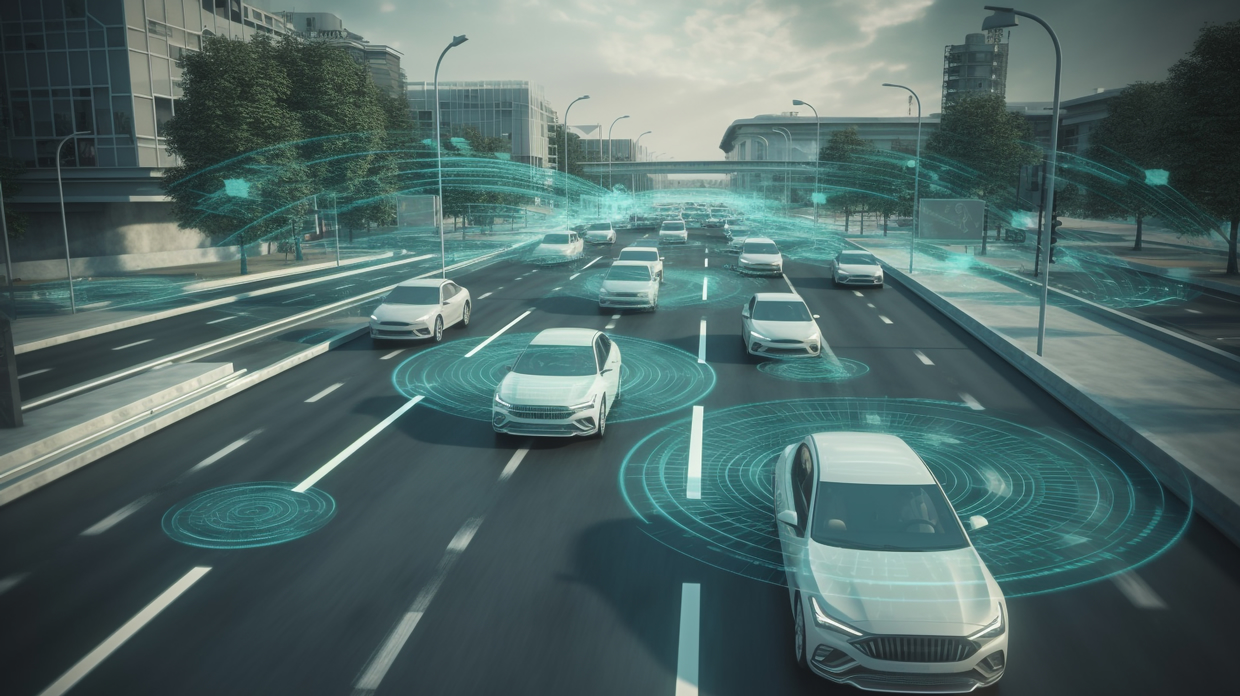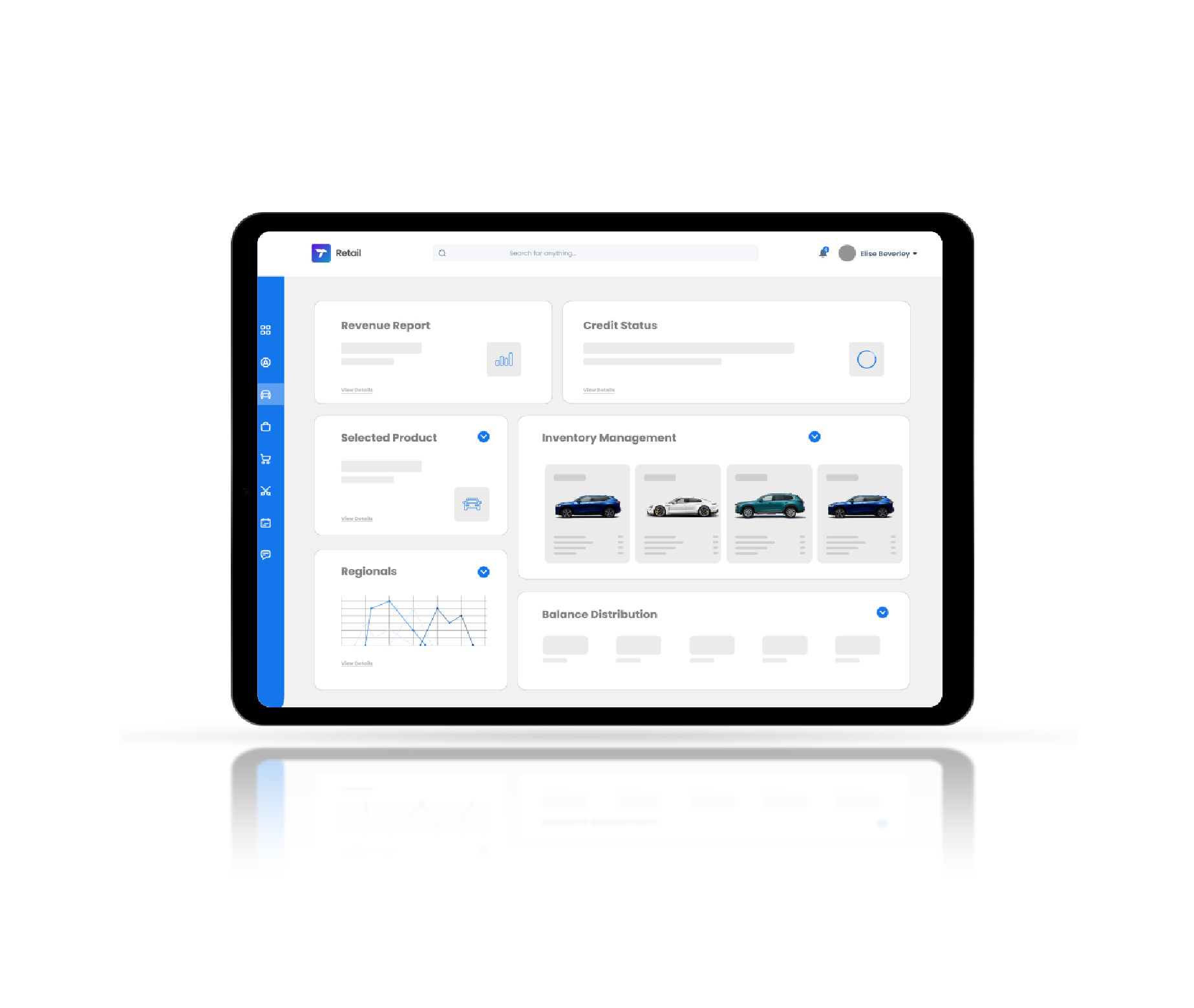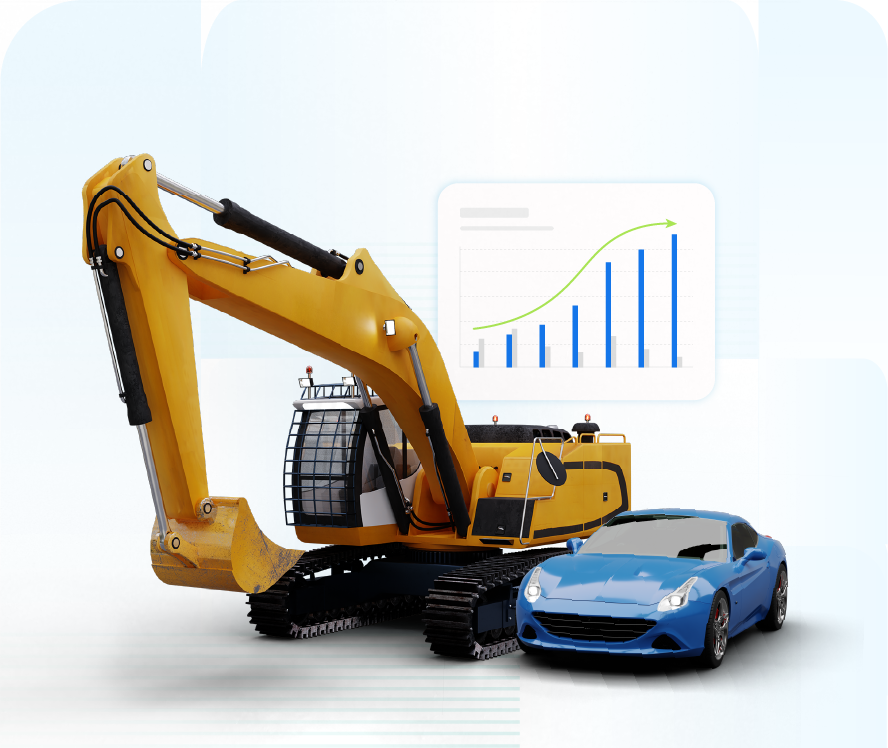Blog
Will vehicles truly be entirely autonomous in the future?
By Jim Freto, on May 31, 2023
NETSOL has been providing smart software for automotive finance and leasing for over four decades, while closely monitoring the impact of autonomous vehicles worldwide.

Over 90% of serious motor vehicle accidents occur due to driver error, according to the United States Department of Transportation. Autonomous vehicles (AVs) are considered by many as a preferred replacement of conventional vehicles as they minimize the risk of distraction, fatigue, and other human shortcomings.
While we may need to wait a while longer, we can foresee a future with autonomous vehicles as the technology has begun to advance.
For example, after many years of development, Advanced Driver-Assist Systems (ADAS) have now matured sufficiently to provide a degree of autonomy. According to Mordor Intelligence, the autonomous car market was valued at $22.22 billion in 2021, and it is speculated to reach $75.95 billion by 2027, while registering a CAGR of 22.75% during the forecasted period of 2022-2027.
$22.2B was the value of the autonomous car market in 2021.
Source: Mordor Intelligence
"Autonomous technology is on its way to becoming a $1 trillion market, pushing logistics companies to start thinking about an autonomous strategy," said Steve Patton, Leader of EY Americas Mobility Sector. For commercial fleets, the benefits for logistics in particular are compelling. Logistics companies can increase their profit margins, address driver shortages and improve safety, while slashing transportation costs and improving delivery times.
In 2020 alone, amid the global pandemic, there was more than $5 billion of spending on autonomy through acquisitions and R&D investments. In a survey, respondents expected at-scale rollouts of AVs in 2026 or close, with China and the United States in the mainstream. In this scenario, trucking has been identified as the earliest use-case for AVs in the commercial market.
 Autonomous technology is on its way to becoming a $1 trillion market, pushing logistics companies to start thinking about an autonomous strategy. - Steve Patton, Leader of EY Americas Mobility Sector
Autonomous technology is on its way to becoming a $1 trillion market, pushing logistics companies to start thinking about an autonomous strategy. - Steve Patton, Leader of EY Americas Mobility Sector
Levels of Vehicle Autonomy
According to the Society of Automotive Engineers (SAE), a guiding framework of standards has been defined for measuring AV capabilities. It ranges from 0 to 5, where 0 denotes human control and 5 denotes a fully autonomous system i.e. fully autonomous car. Tesla's autopilot technology is considered to be Level 2, where the vehicle can manage different functions like steering wheel control and acceleration, but still requires a driver due to its partial driving technology.
At the Mcity Test Facility, run by the University of Michigan, automakers like Ford are testing the capabilities of autonomous vehicles in a controlled environment, where researchers are exploring how connected and autonomous vehicles can operate in the real world. Google's self-driving car project, Waymo, is ranked at Level 4 autonomous technology and boasts driverless cars that have been operating for the past several years.
Technology for Safer Mobility
One of the AV market's main assets is the promise of a secure future, granting drivers, passengers, and pedestrians a safe journey. According to the U.S. National Highway Traffic Safety Administration, 9 out of 10 car crashes are caused due to human error. Suppose the technology fulfills its promise of a secure future - in that case, AVs can potentially eliminate most traffic accidents; granted, that is only possible once the self-driving systems can perceive the road better than the human driver.
One of the AV market's main assets is the promise of a secure future, granting drivers, passengers, and pedestrians a safe journey.
The collection of data is required to gain success and acts as the key to unlocking the true potential of AVs. Today, connected cars can generate up to 25 GB of data per hour, whereas autonomous cars in the future are expected to generate more than 300TB of data per year.
The continuous evolution of global technologies serves as the foundation for developing intelligent software-defined automated systems capable of navigating roads with little human intervention. Today, many modern vehicles are equipped with an advanced driver-assistance system (ADAS) that uses sensor technologies like LiDAR (Light Detection and Ranging) and RADAR (Radio Detection and Ranging) to detect objects. These are getting more sophisticated with every generation. The emergence of 5G technologies for empowering AI and analytical capabilities in self-driving cars will play a crucial role in the development of the AV industry globally.
Ongoing Developments
Automotive companies are taking an iterative approach to developing AVs. A mine in Australia is operating the largest autonomous fleet, controlled through a central system miles away. Deploying an autonomous vehicle in a high-risk environment is a huge development. Check out our Asset Finance platform today!
Surveys indicate that China holds the biggest market for self-driven cars, while many renowned companies overlook the opportunity. The Chinese government recognizes the potential of autonomous cars and is taking controlled measures to support and accelerate their development. Companies in China willing to fast-track the development of AVs can receive complete support for AI, sensor, location, and communications systems.
Pods, shuttles, and off-highway vehicles constitute a controlled environment to test performance. Eventually, upgraded AVs may tackle more use-cases and feature more vehicle types. In the coming years, most AVs will sustain major ongoing developments while remaining behind-the-scenes. For instance, platoons (semi-autonomous vehicles) operate with short distances between each other as an attempt to be more fuel-efficient and to reduce congestion.
Another recent advancement involves the launch of a self-driving truck on the Wufengshan highway, in China's economic center Yangtze Delta. Furthermore, two companies, Oxbotica and ZF, collaborated to make self-driven shuttles for roads and airports in European cities.
Over the next few years, key players like Tesla, Nissan, Toyota, Audi, Google, Lexus, BMW, Mercedes Benz, and Volvo prepare to launch AVs, primarily focusing on the electrification of cars. This may lead to driver's licenses becoming obsolete; big diesel and gasoline engines, due to consumers' use of electric cars, may be outperformed as well. Sources from Apple also describe ongoing efforts to launch self-driven electric cars in the future.
With the current revolutionary pace, we can expect significant changes in the next 10-20 years, considering that our roads utilize transport-as-a-service and profitably administer substantial upgrades in safety and efficiency.
Benefits of Autonomous Vehicles
"90% of traffic-related accidents are caused by human error, so autonomous vehicles have the opportunity to make our roadways much safer - they don't drive distracted, they don't drive tired, and they don't drive drunk. So, we know that the work we're doing can make our roadways significantly safer, and we're committed to doing that," stated Mandi Damman, Chief Engineer of Autonomous Vehicles for General Motors.
A study conducted by an international coalition for future mobility suggested that governments found over 90% of car crashes to be caused by driver behavior. Self-driven cars may resolve this problem to a great extent by minimizing the chances of human error in vehicle control.
 90% of traffic-related accidents are caused by human error, so autonomous vehicles have the opportunity to make our roadways much safer - they don't drive distracted, tired or drunk. So, we know that the work we're doing can make our roadways significantly safer, and we're committed to doing that. - Mandi Damman, Chief Engineer of Autonomous Vehicles for General Motors
90% of traffic-related accidents are caused by human error, so autonomous vehicles have the opportunity to make our roadways much safer - they don't drive distracted, tired or drunk. So, we know that the work we're doing can make our roadways significantly safer, and we're committed to doing that. - Mandi Damman, Chief Engineer of Autonomous Vehicles for General Motors
Higher levels of autonomy correlate to reduced repercussions related to impaired driving, overspeeding, distraction, and other human shortcomings. Moreover, AVs provide some extent of personal freedom to the blind or visually impaired in that they can reach their destinations independently. Best Auto finance software systems save money and time via the avoidance of crashes, medical bills, and vehicle repairs. They reliably lower the risk of accidents, and hence, may also decrease insurance costs. Frank Pallone, Ranking Member of the House Energy and Commerce Committee stated: "Self-driving cars have the potential to reduce deaths caused by car crashes, specifically those caused by drivers' distractions."
Autonomous vehicles could also make an impact in reducing traffic congestion. According to the American Society of Civil Engineers, Americans spend more than 6.9 billion hours daily in traffic. Daniel B. Work, Assistant Professor at the University of Illinois at Urbana-Champaign claimed: "With 5% of vehicles being automated and carefully controlled, stop-and-go waves can be eliminated that are caused by human driving behaviors." Typically, human driving behaviors create stop-and-go traffic; this phenomenon is called the "phantom traffic jam". Researchers found that by controlling the pace of autonomous cars, they could promote a smoother traffic flow for all vehicles.
Highly Automated Vehicles (HAVs) may provide convenient parking and allow occupants to pursue productive and entertaining activities with ease. HAVs can address traffic jams by countering the chances of crashes and irregular on-road vehicle movement. As HAVs counter traffic problems, they reduce fuel costs and carbon emissions. Research has shown that even a small percentage of autonomous vehicles on the road can decrease fuel consumption by 40%. Considering the current fuel crisis, this is now a more viable option for consumers worldwide.
An advantage of using self-driving cars (and particularly autonomous electric vehicles) concerns the reduction of CO2 emissions that results from the reduction in congestion, making autonomous vehicles an environmentally-friendly option. A report from Ohio University states: "Since, in the future, software will drive cars, modern vehicles will now be programmed to reduce emissions to the fullest. The future is expected to reduce emissions by 60%." Considering all the ongoing developments, plenty of effort is required to produce better and more efficient AVs.
Industry Collaboration and Policy Matters
To develop a car that supports future mobility, intensive, long-term collaboration is required between tech innovators, automakers, telecoms, government agencies, and others. While the market is getting more competitive and complex, it is becoming difficult and expensive for a single party to conquer the industry alone. Impressive progress in China has been seen where public and private support for autonomous vehicles is incredibly high. China's ride-hailing service, Didi, is planning to release over one million robo-taxis on its platforms by 2030. Robo-taxis are expected to reduce traffic congestion and the need for car parking through car-sharing services. They will also contribute to high-end, optimized operations by sharing information about connected roads.
The development of self-driving car technology depends on the development of a regulatory framework from policymakers; this is considered to be a complicated hurdle in making AVs mainstream and commercially viable. Nonetheless, despite the many obstacles ahead, many are ready to embrace the future with driverless cars.
While industry players and experts agree that AVs have the potential to exploit the future of mobility, the necessary steps before the technology can be fully commercially adopted have yet to be determined. To speed up the automotive industry's transformation across the next decade, next-generation tech innovations must resolve multi-layered challenges. With the help of Cubic Telecom's related software and analytics solutions, innovation will drive intelligence towards tomorrow's landscape of connected, electric, and autonomous cars and across the entire mobility sphere.
Implications for Industry Stakeholders
- Automakers
OEMs that plan on entering the AV industry should aim to develop a vehicle that boasts best-in-class durability, necessitates low maintenance costs, and possesses high uptime availability. Prime requirements involve the inclusion of predictive maintenance technologies, modular batteries, and fast and improved charging capabilities. OEMs that plan on entering the AV industry should aim to generate significant change; they may do so by becoming service providers, by looking for investments, and by getting partners and AV technology providers on board to create a full-stack solution.
- Mobility Service Providers
Mobility service providers should focus on reducing operational costs. They may devise and implement different strategies concerning the construction of mobility hubs, along with strategies concerning the methods to charge vehicles swiftly, and the time at which those vehicles may be charged. They may also invest in intelligent algorithms that may assist in route planning and that demand forecasting as an effort to reduce the number of empty miles the robo-taxis must travel.
- AV Technology Players
AV technology players should define their role in the landscape critically. These players may work by sourcing their base vehicle, licensing their technologies to their partners, or by fulfilling engineer roles, from that of an OEM to that of a mobility service provider.
Economic Impact
Morgan Stanley has anticipated that self-driving cars may save the economy $488 billion in annual savings by reducing traffic accidents, and that they may save another $158 billion due to reduced fuel costs. The report further estimates that traditional cars, once replaced with driverless ones in the United States, may contribute $507 billion to the economy due to increased worker productivity.
The estimated yearly savings are upwards of $1.3 trillion or more than 7% of the GDP - a genuinely significant positive impact on the economy.
The Future of Self-driving Cars
Close to a decade from now, the success or failure of initial deployments will devise the future of AVs. Notwithstanding, one of the fundamental requirements is to redesign the infrastructure so that it may adopt this modern technology. Many experts feel that it is not appropriate to mix pedestrians and AVs. Even with all the ongoing developments, we may be far from having fully self-driving cars available for regular use. When will we see level 5 autonomous cars? After a decade, AVs may make it to the market, but they would be highly expensive for most people.
Despite all the progress and innovation that the future holds, there are some experts that believe that we may never fully deploy driverless vehicles. David Hynd, Chief Scientist for Safety and Investigations at TRL, stated that fully autonomous vehicles are unlikely to be seen any time soon. According to him, multiple aspects are yet required to be implemented: securing safety along with transportation throughout the infrastructure remain to be the biggest hurdles, especially for developing countries that are slow to adopt change because of the high costs involved. Infrastructure will play its part in the successful adoption of this technology, and public perception of AVs will also contribute to its adoption. Owning a driverless car is too costly, especially for the general public, according to Hynd.
Advanced, real-world testing and projects are building continuous hype around AVs. However, experts are finding that developing the technology is more complex than was originally thought. Still, they remain optimistic toward the AI-operated, 5G-powered, self-driving technology, as advancements in partially autonomous cars offer a more realistic view of the future. By 2035, autonomous driving could create $300 billion to $400 billion in revenue according to McKinsey.
So when will self-driving cars become common? Experts believe that we may see autonomous vehicles on the road alongside human-driven vehicles in 10 years. The technology comes with pros and cons, and due to ever-changing trends, it is challenging to predict the future with any sort of precision, and it is difficult to know whether cars will be entirely autonomous.
$300B-$400B could be created in revenue by autonomous vehicles by 2035.
Source: McKinsey
NETSOL has been proudly serving automotive finance and leasing companies worldwide with smart software technology for over four decades and is itself closely monitoring the development of autonomous vehicles and how they will affect the global automotive market. Explore the company's modern automotive financial solutions for the evolving global automotive finance and leasing industry.
References
- https://www.mordorintelligence.com/industry-reports/autonomous-driverless-cars-market-potential-estimation
- https://www.mckinsey.com/features/mckinsey-center-for-future-mobility/our-insights/whats-next-for-autonomous-vehicles
- https://www.mckinsey.com/industries/automotive-and-assembly/our-insights/autonomous-drivings-future-convenient-and-connected
- https://www.mckinsey.com/industries/automotive-and-assembly/our-insights/the-road-to-affordable-autonomous-mobility
- https://www2.deloitte.com/cn/en/pages/consumer-industrial-products/articles/fully-autonomous-driving.html
- https://robotonomics.wordpress.com/2014/02/26/morgan-stanley-the-economic-benefits-of-driverless-cars/
- https://coalitionforfuturemobility.com/benefits-of-self-driving-vehicles/
- https://www.forbes.com/sites/enriquedans/2021/06/11/the-future-of-autonomous-vehicles-product-orservice/?sh=7fc0c1fb5892
- https://www.cubictelecom.com/blog/self-driving-cars-future-of-autonomous-vehicles-automotive-vehicles-2030/
- https://www.cubictelecom.com/blog/self-driving-cars-future-of-autonomous-vehicles-automotive-vehicles-2030/
- https://www2.deloitte.com/us/en/insights/industry/retail-distribution/consumer-behavior-trends-state-of-the-consumer-tracker.html
- https://www.bbvaopenmind.com/en/technology/innovation/fully-autonomous-cars-how-and-when-will-become-reality/
Related blogs

Blog
Intelligent deal structuring: The new standard in digital retail platforms

Blog
Transforming BFSI with data engineering: Unlocking actionable insights from big data

Blog



